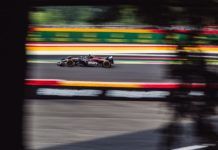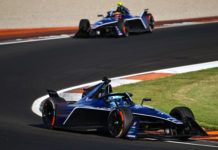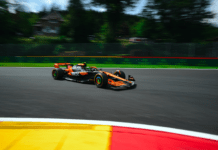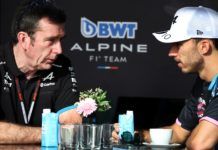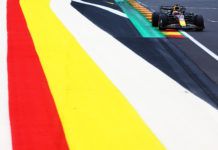Mercedes is hoping for initial progress in F1 Australian GP, as it explains what they found to be limiting them in Jeddah.
After struggles in the last two seasons, Mercedes has another slower start to its 2024 F1 campaign where they have found problems certainly. They are behind Red Bull as such, but they are also slightly on the backfoot against Ferrari too.
They are in the mix with McLaren and Aston Martin at the moment and Toto Wolff has acknowledged the shortcoming. He knows that they are lacking in high-speed corners and they are hoping of initial progress in this weekend’s Australian GP.
They lost points in Bahrain and Saudi Arabia, which is what they don’t wish to repeat in the races to come. “We’ve been hard at work since Jeddah building on the learnings from the first two races,” said Wolff. “It’s encouraging to see the potential in the W15 but there are also clear areas of improvement.
“We have looked competitive in low and medium speed corners but high-speed has been a weakness so far. We have been working hard to understand why our performance hasn’t reflected our expectations. Improving that is a major focus. We hope to make some initial progress for Melbourne, and that work will guide our development in the weeks ahead.
“It’s great to feel the energy and determination running through the factories as we work to unlock the potential of the car. We left points on the table in both Bahrain and Saudi Arabia. We started off each weekend strongly, running our usual practice programmes, but couldn’t deliver on that initial promise.
“With the chasing pack being so close, maximising the potential of the car each weekend is key. Albert Park gives us another chance to show what we can do. It is a great circuit in a great city, with a passionate and vocal fan base, and we look forward to returning,” summed up Wolff.
Looking back at the Jeddah event, Mercedes chief engineer Andrew Shovlin expanded on the problems they faced and the things they found out about the W15. They trialed two different set-ups between George Russell and Lewis Hamilton in Saudi Arabia, which they had to after finding different balance points.
“Well, it’s quite rare that we run the two cars identically,” said Shovlin. “We actually started fairly similar. So, the balance wouldn’t have been too different through the speed range. The drivers then gave us their feedback after the FP1 session. And at that point they then went off in different directions.
“Now some of that was they’d complained about bouncing. So, we were looking at ways of trying to improve that. You can play with ride heights, you can play with stiffness and that all seems effective. And also they were just trying to tune the balance through the speed range. So what’s the car like in the low speed?
“What’s it like in the high speed? Now the balance that we had in that session probably wasn’t as good as FP1. And from there on, we started to converge back in the general direction of where we came from arriving there. But the learning of it is just that when you change things you can see the differences.
“So one car making changes, you can see how it performs run to run. We can also look at the global performance of the two cars but fundamentally the limitations that we had in qualifying and the race, they were broadly the same for both. So it’s telling you it’s not a small difference, it’s not a tiny bit of camber or a spring or bar here and there.
“It’s something more fundamental that we need to dig into and understand. There’s definitely data that we’re picking through from Jeddah. We’re also looking at data from Bahrain race, Bahrain test and we will come up with a plan for how we approach free practice in Melbourne.
“But it’s not just based on what we did in Jeddah. There’s a lot of work going on within aerodynamics department, vehicle dynamics department. We’re trying to design some experiments there that will hopefully give us a direction that’s good for performance,” summed up Shovlin, who expanded on why Mercedes is losing in high-speed corners.
And added on how much they were losing in one sector in Jeddah. “It’s a few things,” said Shovlin. “One of them was the balance wasn’t great. So those very fast corners, the walls aren’t particularly far away. So the ones where the driver wants a lot of confidence, and quite often we were snapping to oversteer if they really leant on the tyres.
“And that… you can easily imagine how unsettling that is for the drivers. Now, that was a factor in a qualifying and the race. In qualifying we were also suffering a bit with the bouncing. Now that was less of a problem in the race. There’s more fuel on the car. You’re going a bit slower. And that seemed to calm down and wasn’t such an issue.
“And then the big one is we don’t really have enough grip there. So that’s one of the things that we are working hard on this week because Melbourne has similar nature of corners. So we’re doing a lot of work to try and understand why did we not seem to have the grip of some of our close competitors.
“It depends on the car you’re comparing to, but in that sector it was around 3 or 4 tenths that that kind of margin. Now the other thing to consider is we were actually one of the fastest cars, if not the fastest car in a straight line. So we were on quite a lot a light wing level.
“And what we could do is slow ourselves down in sector two and three to try and recover a bit of that time in sector one. But ideally we’d like to keep that and work out a way to try and improve sector one by means other than just putting a load more downforce on the car and then paying the price for it on the straights,” summed up Shovlin.
Amid these analysis and investigation to improve further, Mercedes has seemingly poached Simone Resta as its strategic development director from Ferrari. Additionally, they have taken in Enrico Sampo too, to be head of performance software application.
Here’s Mercedes on Pirelli analysing George Russell’s tyres
Here’s Oliver Bearman on help from Lewis Hamilton
Here’s link to a F1 Discord channel, join in to interact


